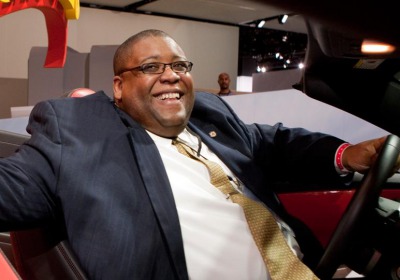Industry pulse: NHTSA administrator David Strickland talks distracted driving
Mon, 20 Jun 2011
Editor's note: In an exclusive interview with National Highway Traffic Safety Administration administrator David Strickland, Melanie Batenchuk of Be Car Chic asked about distracted driving and the agency's combined efforts with the Department of Transportation to curb this bad behavior.
David Strickland has been championing safer, distraction-free driving since the beginning of his tenure at NHTSA in January 2010. Strickland has been working tirelessly toward this goal alongside stakeholders such as Transportation Secretary Ray LaHood, private-sector executives, automobile manufacturers and safety advocacy groups.
The Transportation Department has even launched the Web site www.distraction.gov to educate Americans and policymakers about the dangers of distracted driving. Strickland and his boss, LaHood, are also working with the states to enforce against distraction. To date, 33 states, the District of Columbia and Guam have passed antitexting laws. Eight of those states have also banned handheld-phone use while driving.
In a post by the Wall Street Journal blog on May 24, Strickland referenced consumers' shift in mind-set about wearing their seatbelts over the past few decades. When asked whether NHTSA and the Transportation Department should take a similar approach to turn people from driving while distracted, Strickland explained that there are similarities in both movements.
"[The seatbelt initiative] wasn't a regulatory solution as much as it was a campaign solution," Strickland said. "The belt program took off in 1994 with Click It or Ticket. With that we did some work with the states and moved it up to the national level."
A national ad campaign brought the seatbelt use numbers from 60 percent in 1994 (the start of the well-known Click It or Ticket campaign) to 85 percent today. "We think that this model--we have great hopes that it will work for distraction," Strickland continued.
The data looks appealing, but there remains a good amount of research to be done on distracted driving before moving forward with federal guidelines. Currently, NHTSA is conducting research for pilot projects in Hartford, Conn., and Syracuse, N.Y. The agency is also helping states enforce their rules by running an ad campaign called Phone in One Hand, Ticket in the Other.
But what about that looming federal rule that many in the automotive community have been anticipating? The lack of definitive research prevents the agency from moving into rule-making posture at this time. However, NHTSA does plan to issue voluntary guidelines for automobile manufacturers this fall.
"These guidelines will be for in-vehicle interfaces--touch screens, infotainment systems. After that, we'll be working on handheld and nomadic devices, and finally, voice-command devices," said Strickland.
Strickland also tried to clear up any fears that consumers or those in the automotive-policy community may have in anticipation of a national law. Strickland explained that state laws deal with the driver, requiring people to keep their hands on the wheel and eyes focused on the road. A federal rule would only regulate what is put in the vehicle by the OEM.
One point of contention for the auto industry is the regulation of how people can use their mobile devices when in their vehicles. But for Strickland, a gray area exists over the regulation of smartphones, which "by itself is a consumer product, regulated by other agencies," he said.
"NHTSA regulates the car--federal motor-vehicle safety standards and all that. But there really is--in terms of once that device comes into the vehicle and connects with it--no clear authority. Who actually regulates that?"
Strickland would not have us forego technology altogether but he makes a good point that the mobile applications that are so widely popular are not made to be used by someone driving a car. He wants to define how agencies deal with those issues.
"For us, guidelines are a stepping-off point," said Strickland. "[Auto manufacturers] have a strong obligation to do research and find that some applications are OK in the car--such as navigation, streaming Internet radio--what's suitable for a driver while they're operating a vehicle.
"I recognize everyone wants to be connected on the go, but if you're creating a business model in the market and it doesn't have its roots in safety, then that business model will ultimately fail.
"At the telematics conference in Michigan," Strickland added, "everyone was gawking about apps and no one was talking about their safety. When [safety] isn't part of the conversation, I see consequences on a large scale."
Strickland also discussed how mobile applications developed without safety in mind increase the risk for all drivers, namely for those with less experience, and especially for Gen Y drivers who are so attached to their mobile devices.
When asked what is next for NHTSA, Strickland was clear about his and the agency's mission--to save lives.
"All the work we're doing is to that end," he said. "We are fully supportive of good information, ease of use, and anything that helps make the driving experience more pleasurable for the driver without hurting their safety."
Strickland emphasized that while NHTSA cannot anticipate every mobile app developed, the agency does not want to stifle innovation. The agency hopes to establish a framework that explores what could come into the car down the road, and make sure that whatever that technology is does not cause an additional safety risk to drivers.
Go to www.becarchic.com to read more from Melanie Batenchuk at her blog.
By Melanie Batenchuk of Be Car Chic

